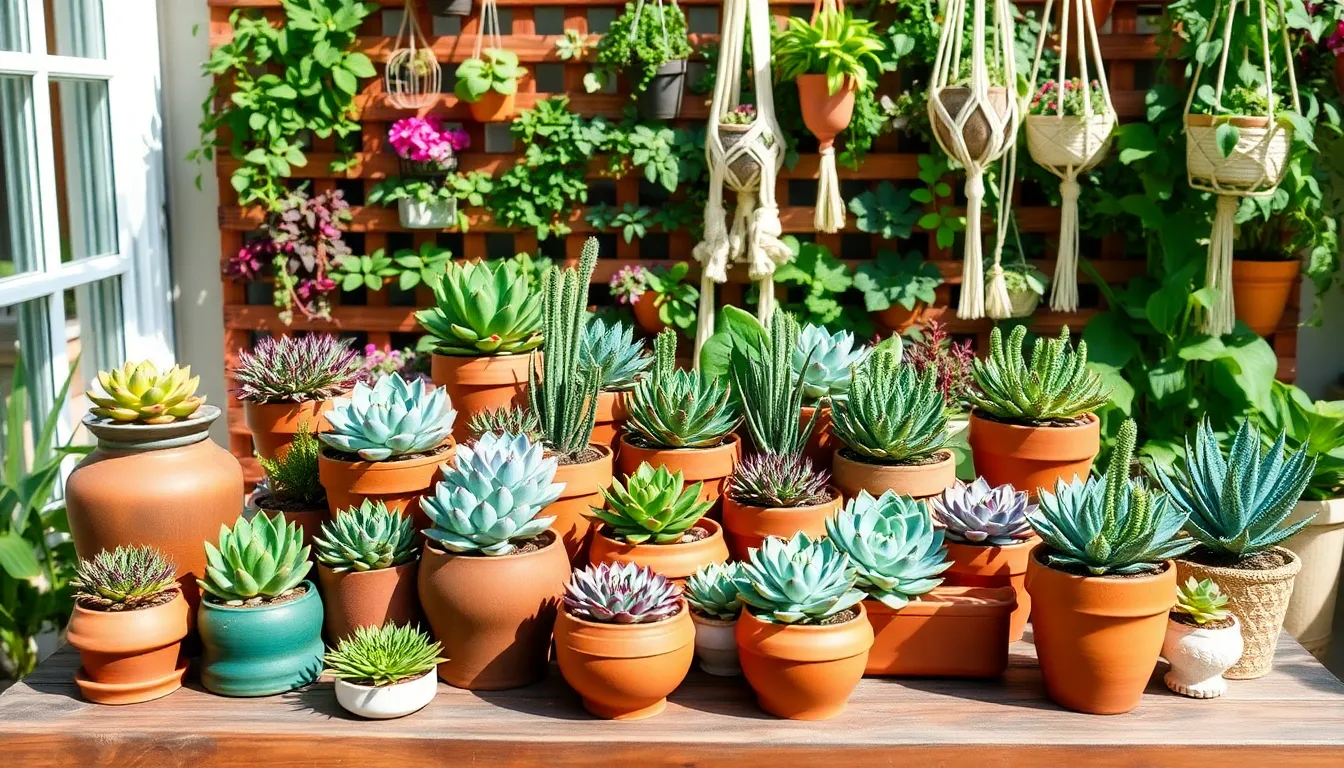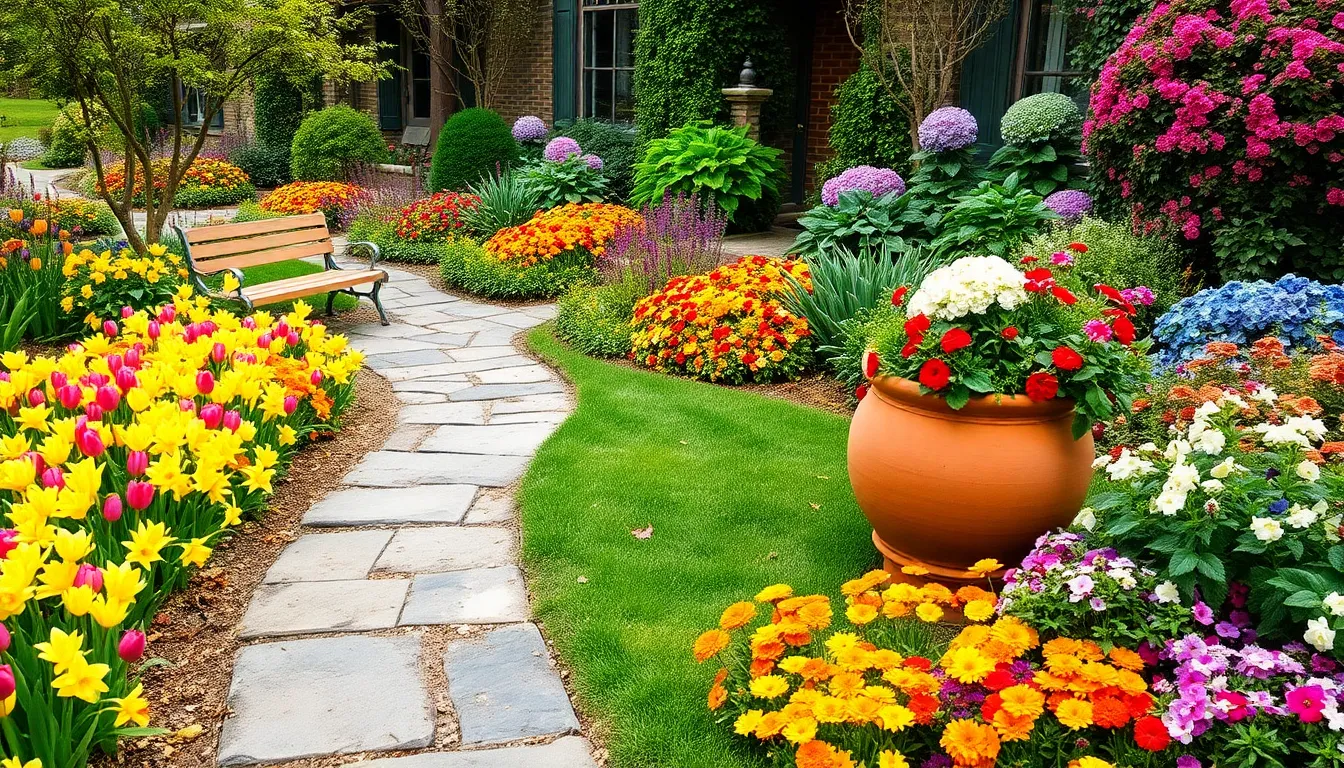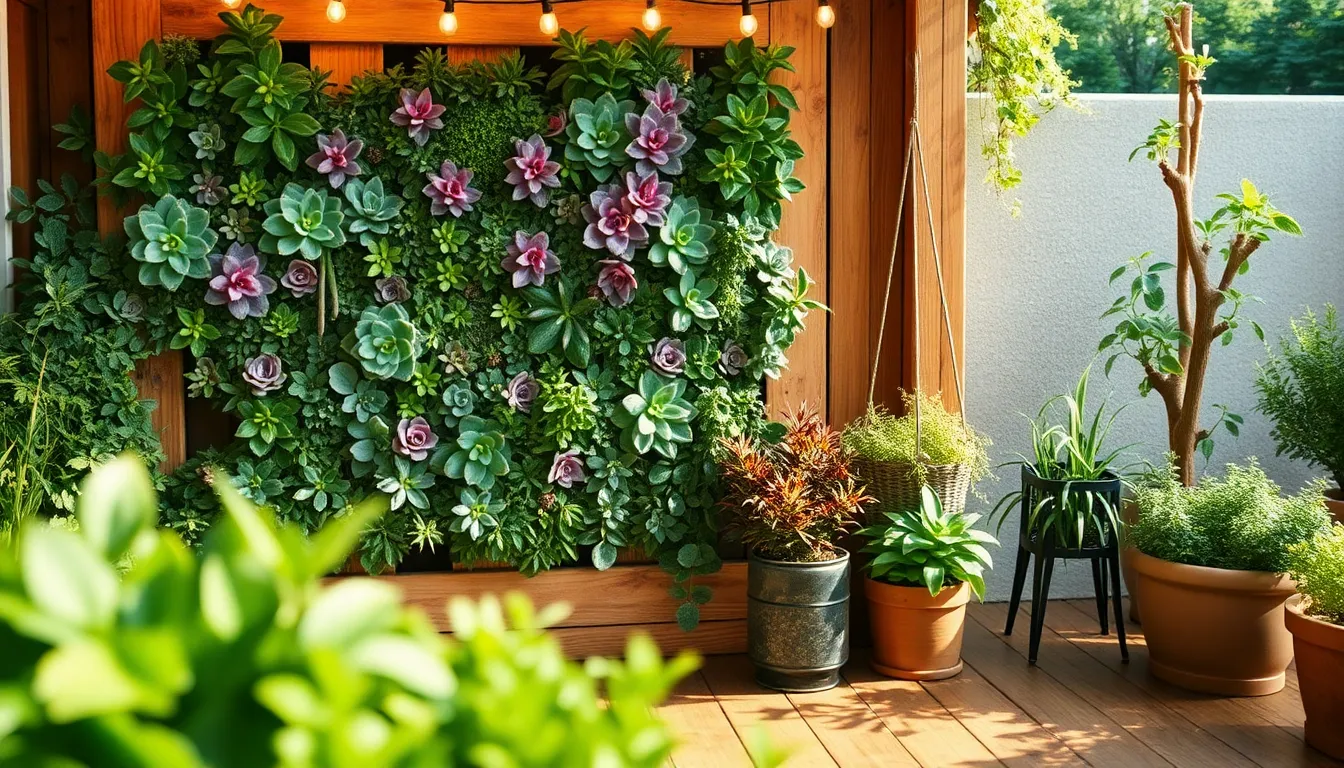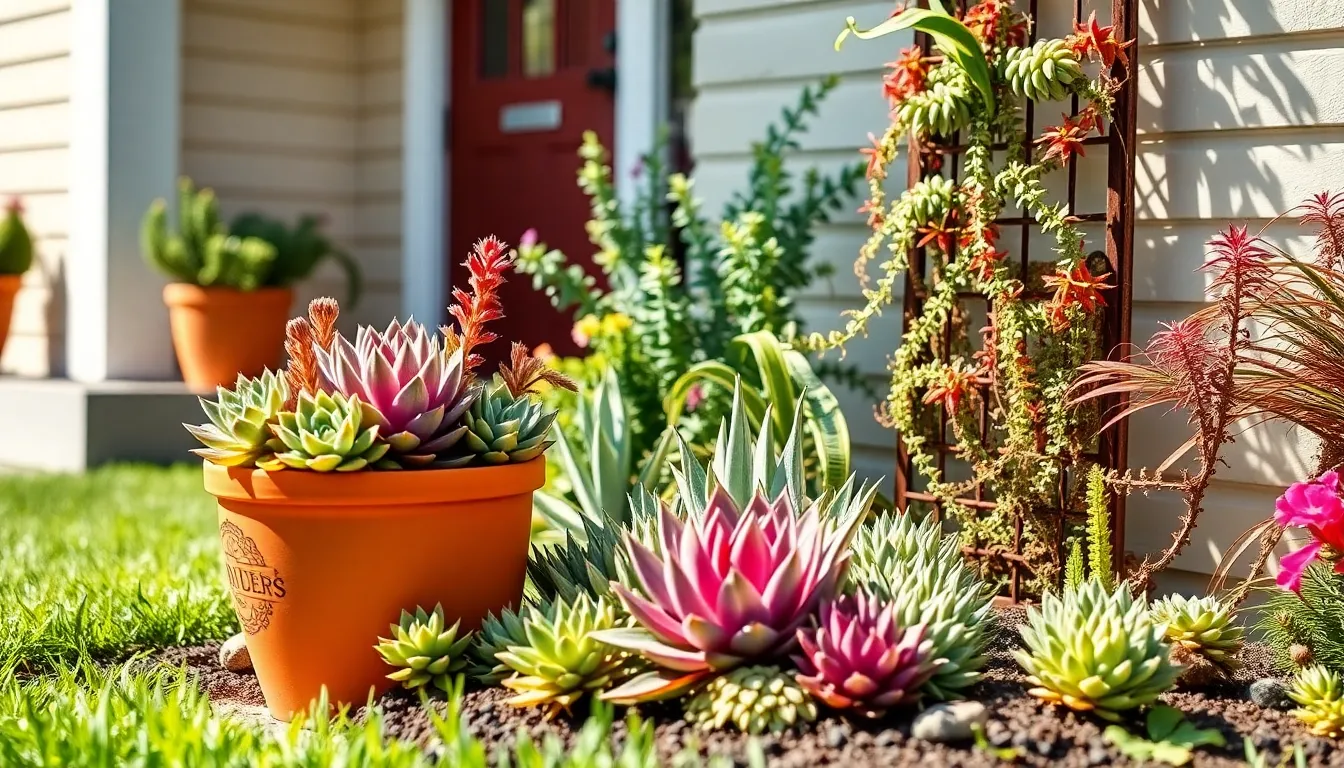Welcome to the vibrant world of patio gardening, where creativity blooms and nature’s beauty is just a step outside your door! Whether you’re just starting your gardening journey or have a seasoned green thumb, “12 Creative Patio Garden Ideas” offers a treasure trove of inspiration to transform your outdoor space into a personal oasis. This guide is here to spark your imagination and guide your hands, providing you with the tools and ideas to cultivate a patio garden that thrives.
In our bustling world, a patio garden can be a perfect retreat, offering both aesthetic delight and the practical benefits of fresh herbs, flowers, and vegetables. You’ll discover innovative ways to maximize your space, no matter how small, and learn techniques that can bring your gardening dreams to life. From vertical gardens to charming container arrangements, each idea is crafted to ensure your gardening success, boosting your confidence every step of the way. Get ready to dig in and let your creativity flourish, knowing that a lush, inviting patio is within your reach.
Incorporate Vertical Plant Hangers
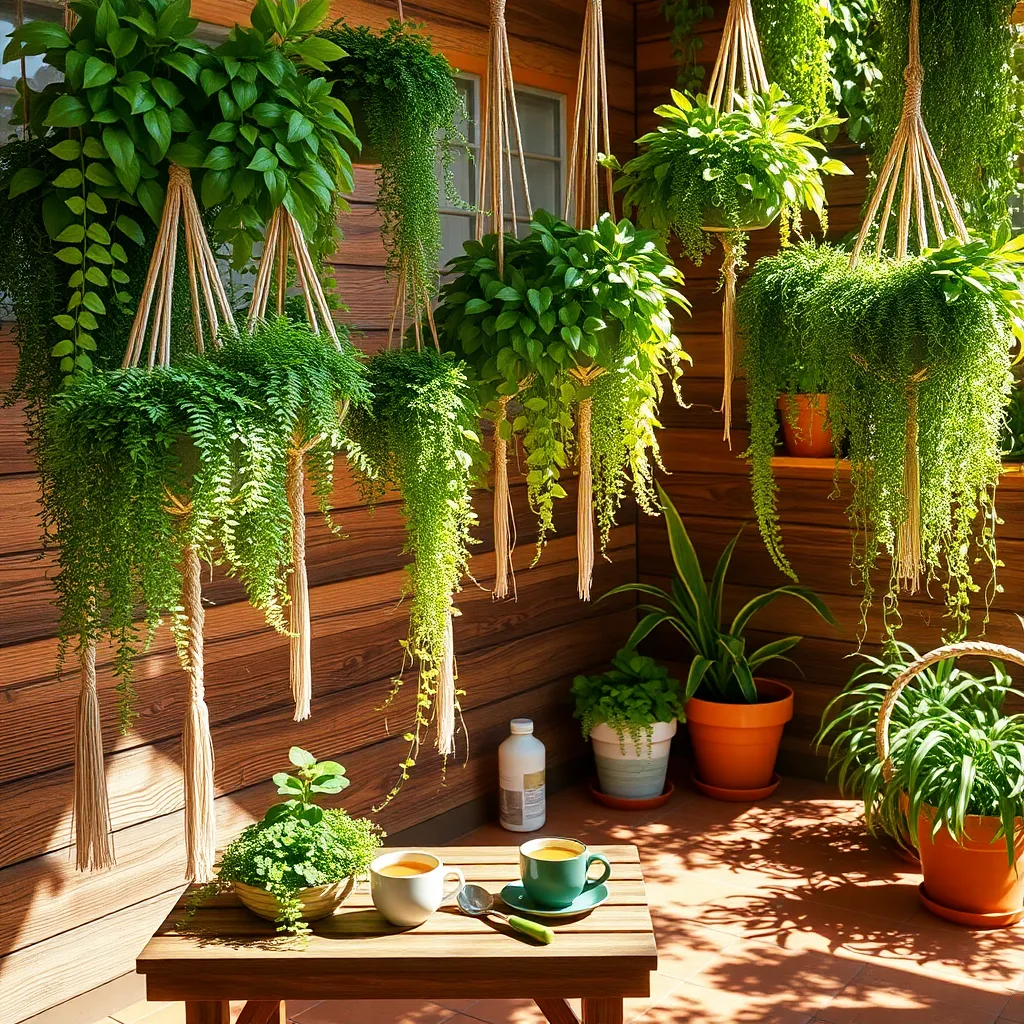
Vertical plant hangers are an excellent way to maximize your patio space while adding a lush, green element to your outdoor decor. They allow you to grow a variety of plants, including herbs, flowers, and even small vegetables, without taking up much ground space.
For beginners, start with hardy plants like pothos or spider plants, which thrive in a range of lighting conditions and are forgiving of occasional neglect. Ensure you use a well-draining potting mix, such as a blend of peat moss and perlite, to prevent waterlogging.
Advanced gardeners might experiment with vertical plant hangers to grow strawberries or trailing cherry tomatoes. These plants require at least six hours of sunlight daily and benefit from a soil mix enriched with compost to support fruit production.
Regular maintenance is key to keeping your vertical garden vibrant and healthy. Water your plants consistently, allowing the top inch of soil to dry out between watering, and fertilize every four to six weeks with a balanced liquid fertilizer to promote growth.
Design with Tiered Plant Stands
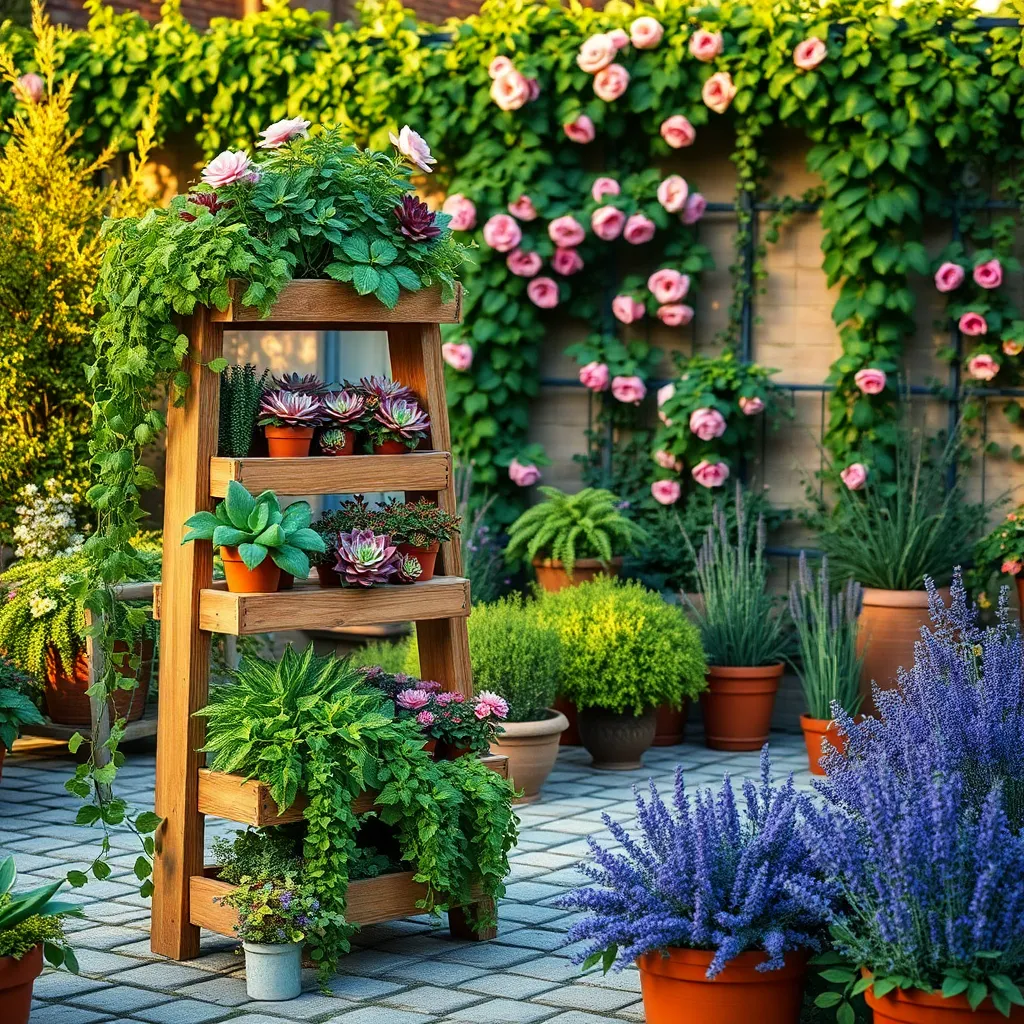
Utilizing tiered plant stands can transform your patio into a lush, layered oasis. These stands allow you to maximize space by creating vertical interest with a variety of plants at different heights.
Start with sturdy, weather-resistant materials like metal or treated wood to ensure longevity. Place the stand in a location that receives the appropriate amount of sunlight for your chosen plants, whether full sun or partial shade.
Consider mixing plant varieties to add visual appeal and create a balanced ecosystem. Use a combination of trailing plants like ivy or pothos on top tiers and bushier plants like herbs or small flowering species on the lower levels.
Maintain proper plant care by ensuring adequate drainage in each pot. Water plants according to their specific needs; for example, succulents require less frequent watering compared to thirsty annuals like petunias.
Utilize Recycled Container Gardens
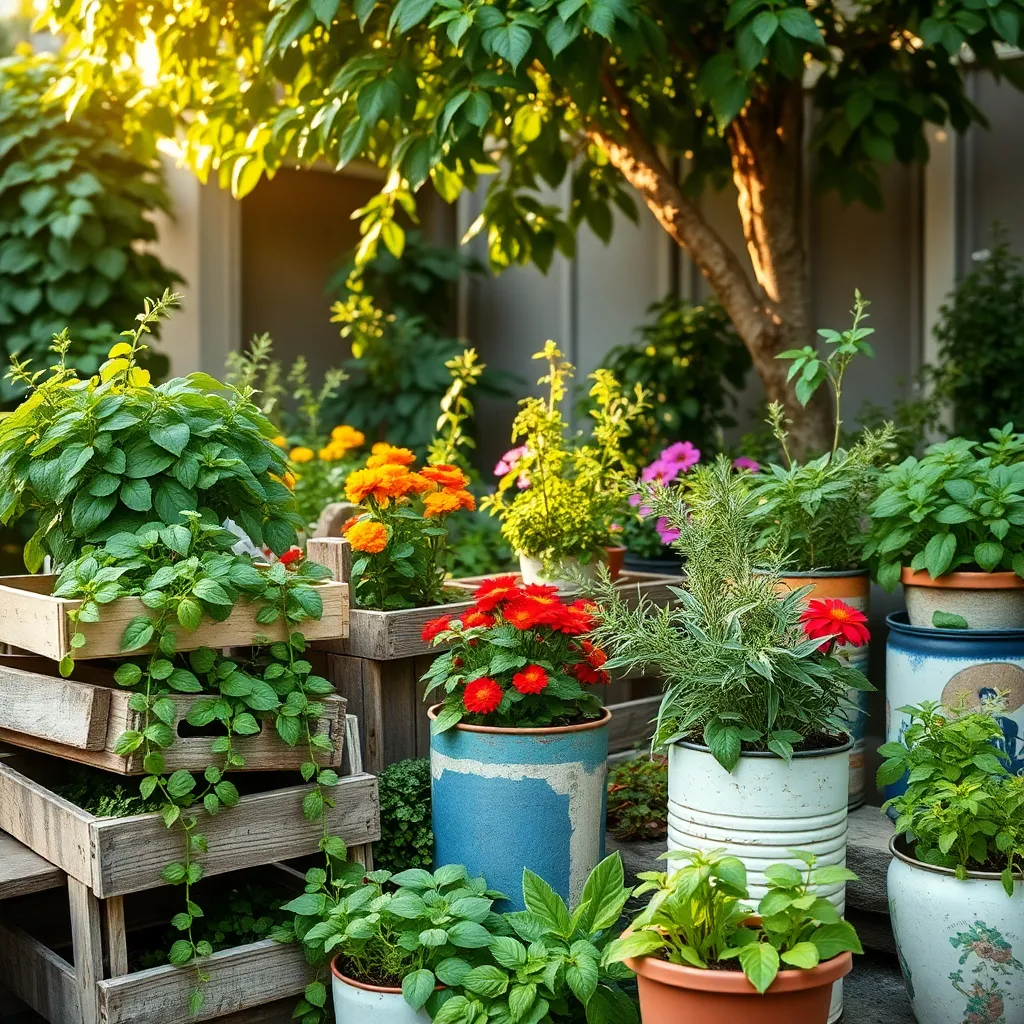
Transform everyday items into unique planters by utilizing recycled containers for your patio garden. This eco-friendly approach not only reduces waste but also adds a unique charm to your gardening space.
Consider using old tins, wooden crates, or even broken teapots as creative containers. Ensure these recycled items have proper drainage, which can be achieved by drilling holes at the bottom.
Recycled containers can accommodate a variety of plants, from herbs like basil and mint to vibrant flowering plants such as marigolds. For optimal growth, use a well-draining potting mix and place your containers where they’ll receive sufficient sunlight based on the plants’ needs.
Watering frequency will vary depending on container size and material; for instance, metal and plastic containers may require less frequent watering than porous materials like clay. For advanced gardeners, consider creating a self-watering system using recycled bottles or jars to automate hydration.
Add Movable Herb Planters
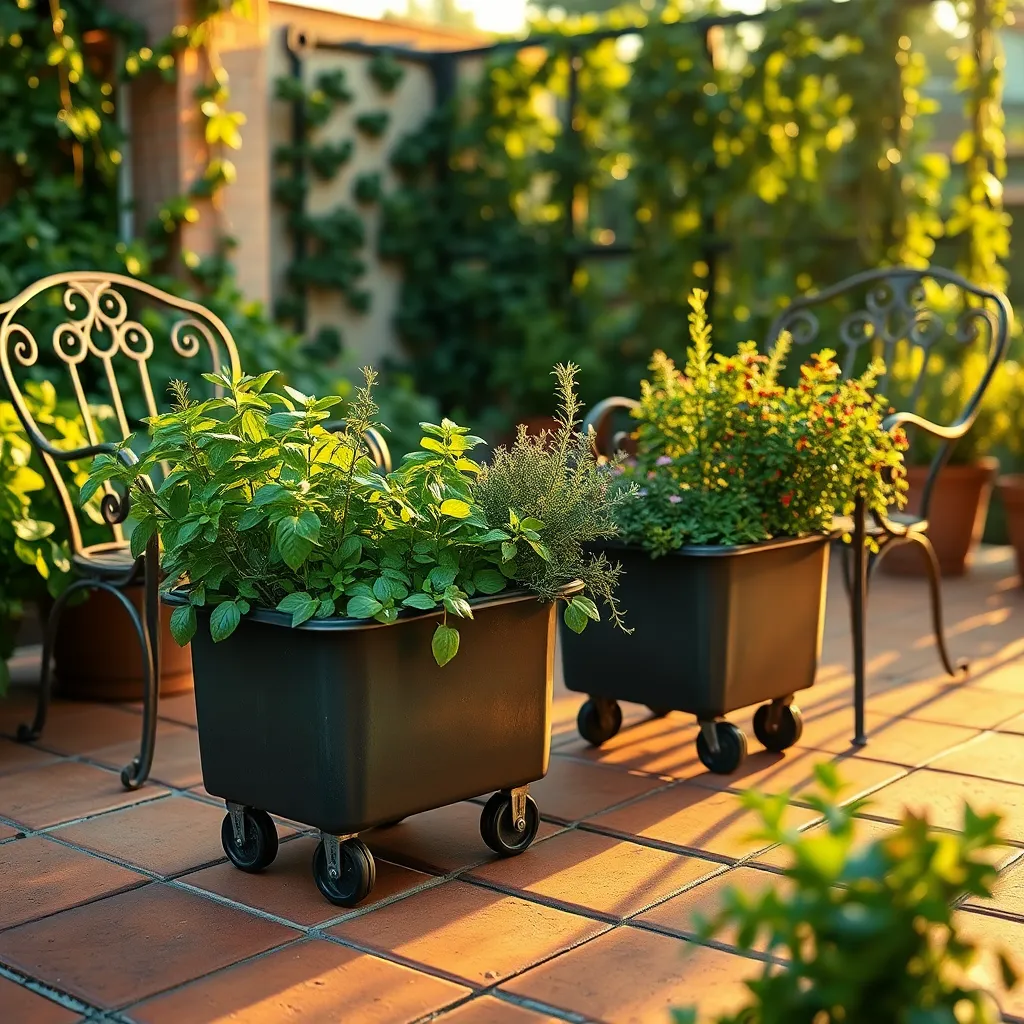
Movable herb planters are a fantastic way to introduce versatility into your patio garden. They allow you to follow the sunlight or provide shade as needed, giving your herbs the best chance to thrive.
Choose a mix of herbs that suit your culinary preferences, such as basil, mint, and thyme, for a diverse and flavorful selection. Ensure your planters have drainage holes to prevent waterlogging, which is crucial for healthy root systems.
For optimal growth, use a high-quality potting mix that retains moisture but drains well. Water your herbs consistently, keeping the soil damp but not saturated, and consider using a slow-release fertilizer to promote lush growth.
Beginner gardeners can start with hardy herbs like rosemary and thyme, which are more forgiving if watering schedules are missed. For experienced gardeners, try experimenting with less common herbs like lemon balm or tarragon to expand your herbal repertoire.
Integrate Built-in Bench Planters
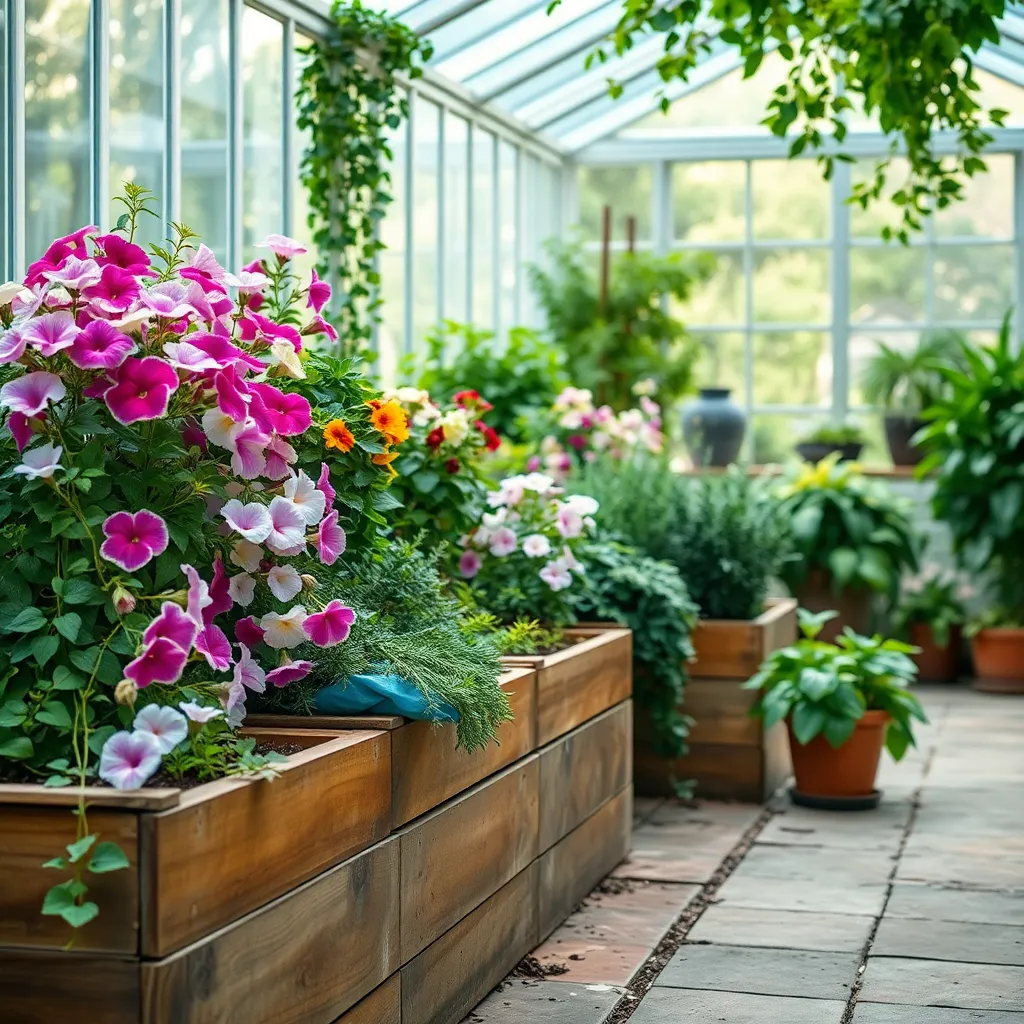
Transform your patio into a functional and aesthetic space by integrating built-in bench planters. These dual-purpose designs offer seating while also providing ample space for your favorite plants, making them an excellent way to maximize your patio area.
Choose durable materials like cedar or teak for the benches, as they withstand outdoor conditions well. Ensure the planters have proper drainage by adding a layer of gravel at the bottom and drilling holes if necessary.
Opt for a soil mix that suits the specific plants you wish to grow; a blend with good drainage is essential. For beginners, consider starting with hardy plants such as lavender or succulents, which thrive in well-draining soil and require less frequent watering.
Advanced gardeners might explore incorporating an automatic watering system to maintain consistent moisture levels, especially in hotter climates. Group plants with similar light and water needs together to simplify care and promote healthy growth.
Create a DIY Trellis Wall
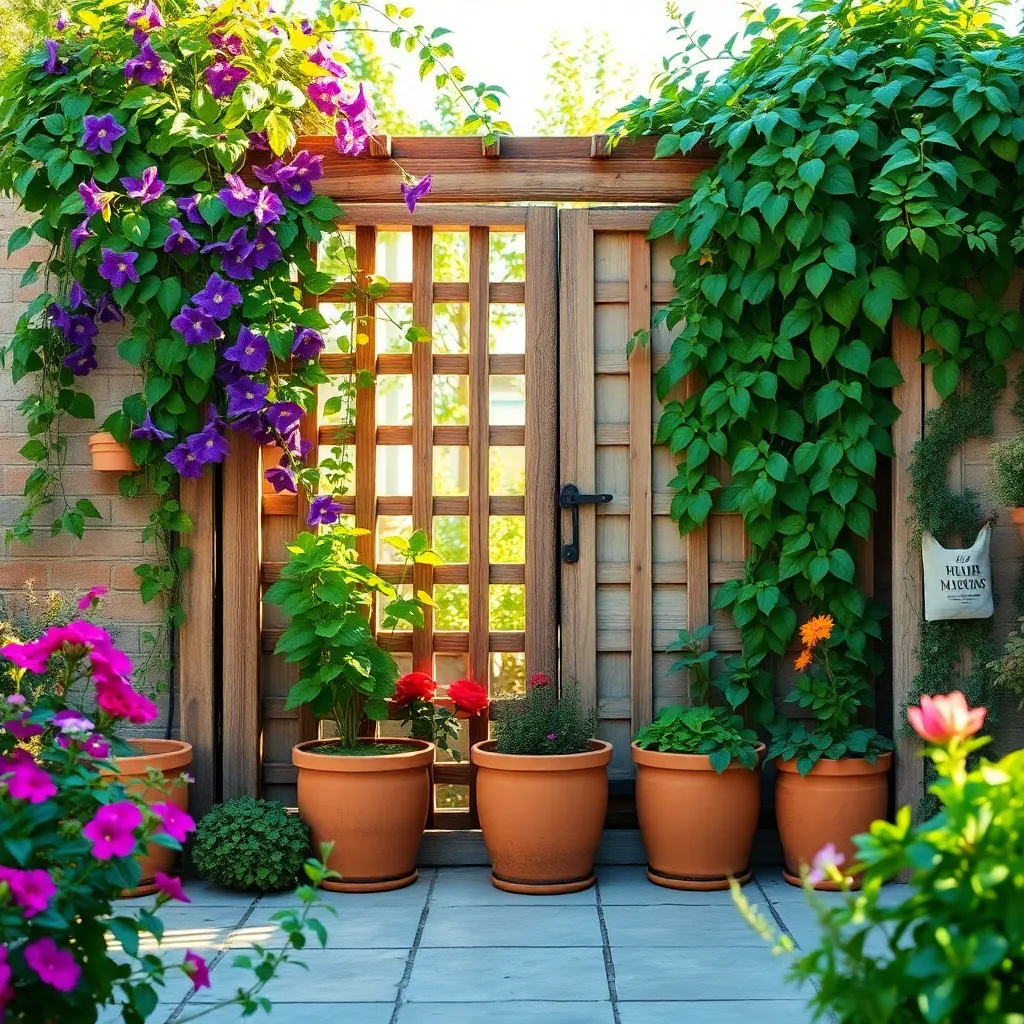
One innovative way to enhance your patio garden is by creating a DIY trellis wall. This not only maximizes vertical space but also provides a beautiful backdrop for vining plants like clematis, sweet peas, or climbing roses.
To start, choose a sturdy material such as wood, metal, or PVC for your trellis. Ensure the structure is securely anchored to withstand strong winds and support the weight of mature plants.
When selecting plants, consider their light and water requirements. For sun-loving climbers, position the trellis in a spot that receives at least six hours of sunlight daily.
Regular maintenance is key to a thriving trellis wall. Prune and train your plants to encourage upward growth and prevent them from becoming too dense, which can block airflow and invite pests.
Experiment with Colorful Pot Arrangements
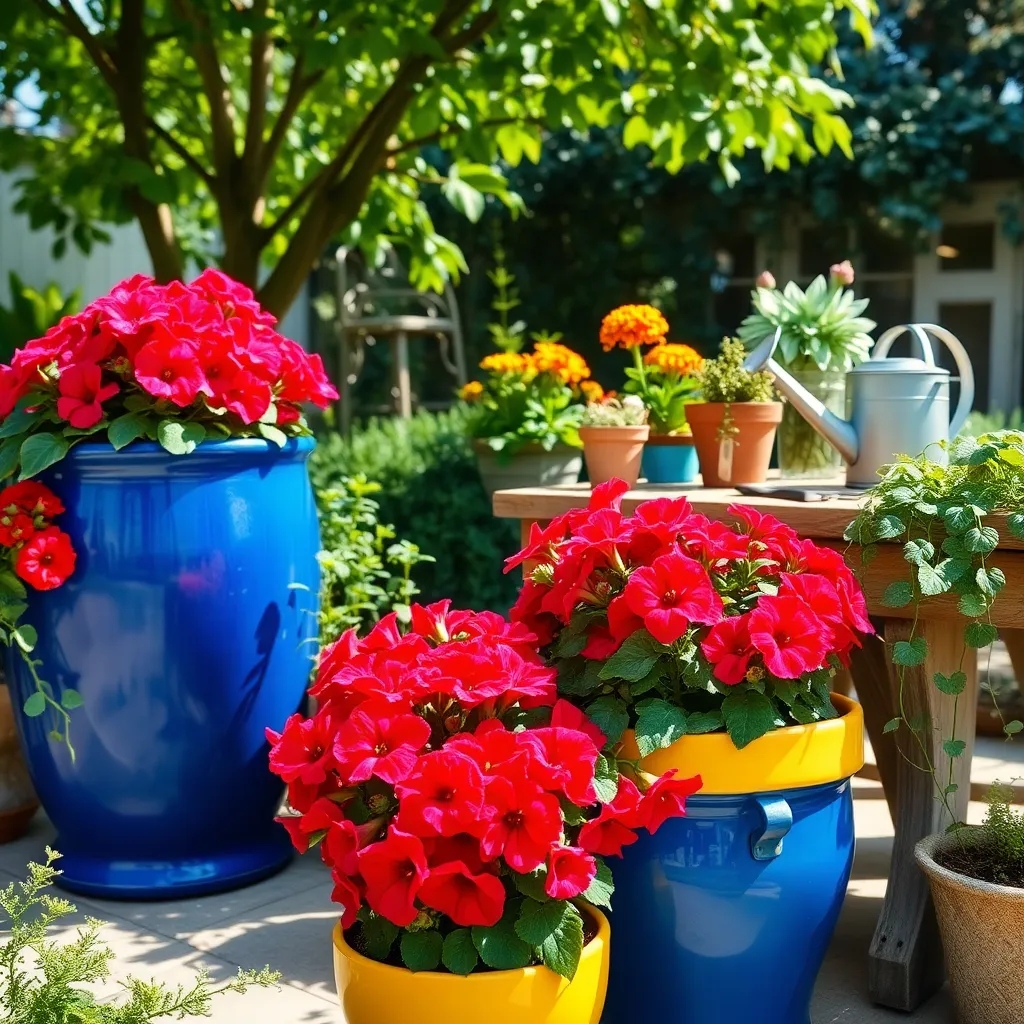
Bringing a splash of color to your patio can be as simple as experimenting with colorful pot arrangements. Start by selecting pots in a variety of hues and sizes to create visual interest and depth in your garden space.
Consider using contrast to make your plants pop; for example, pair a vibrant red pot with lush green foliage. Succulents and annuals are excellent choices for these kinds of arrangements as they thrive in well-drained soil and require less frequent watering.
For a more advanced touch, incorporate trailing plants like ivy or sweet potato vine to add dimension and movement to your displays. These plants not only enhance the aesthetics but also benefit from being in pots with good drainage to prevent root rot.
To care for your colorful pot arrangement, check the soil moisture regularly and water when the top inch feels dry.
- Use a potting mix blended with perlite or sand for improved drainage.
- Position pots to receive appropriate sunlight based on plant needs; most flowering plants prefer at least six hours of direct sunlight daily.
Install Hanging Basket Displays
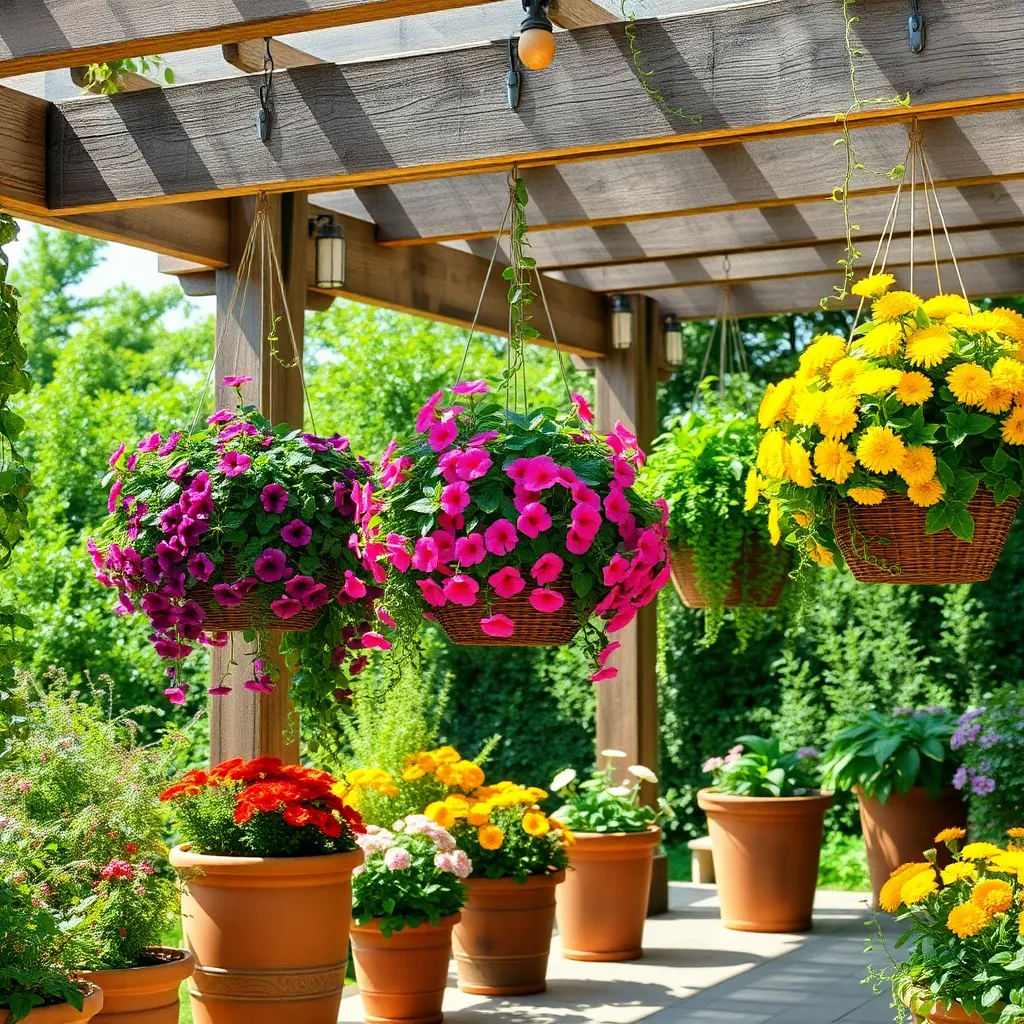
Hanging basket displays offer a charming way to maximize vertical space on your patio. These displays can add a splash of color and texture at eye level, making your garden feel more immersive and dynamic.
For beginners, choose easy-care plants like trailing petunias or ivy that thrive in a variety of conditions. Ensure your hanging baskets have good drainage by using pots with holes and adding a layer of gravel or pebbles at the bottom.
Use a high-quality potting mix, ideally one enriched with slow-release fertilizer, to support plant growth. Watering is crucial; aim to water your baskets daily in the summer, ensuring the soil is moist but not waterlogged.
Experienced gardeners might explore more advanced combinations like fuchsias, begonias, and lobelias for a stunning display. Pay attention to the light conditions on your patio and hang baskets accordingly, as some plants prefer full sun while others thrive in partial shade.
Optimize Space with Corner Shelves
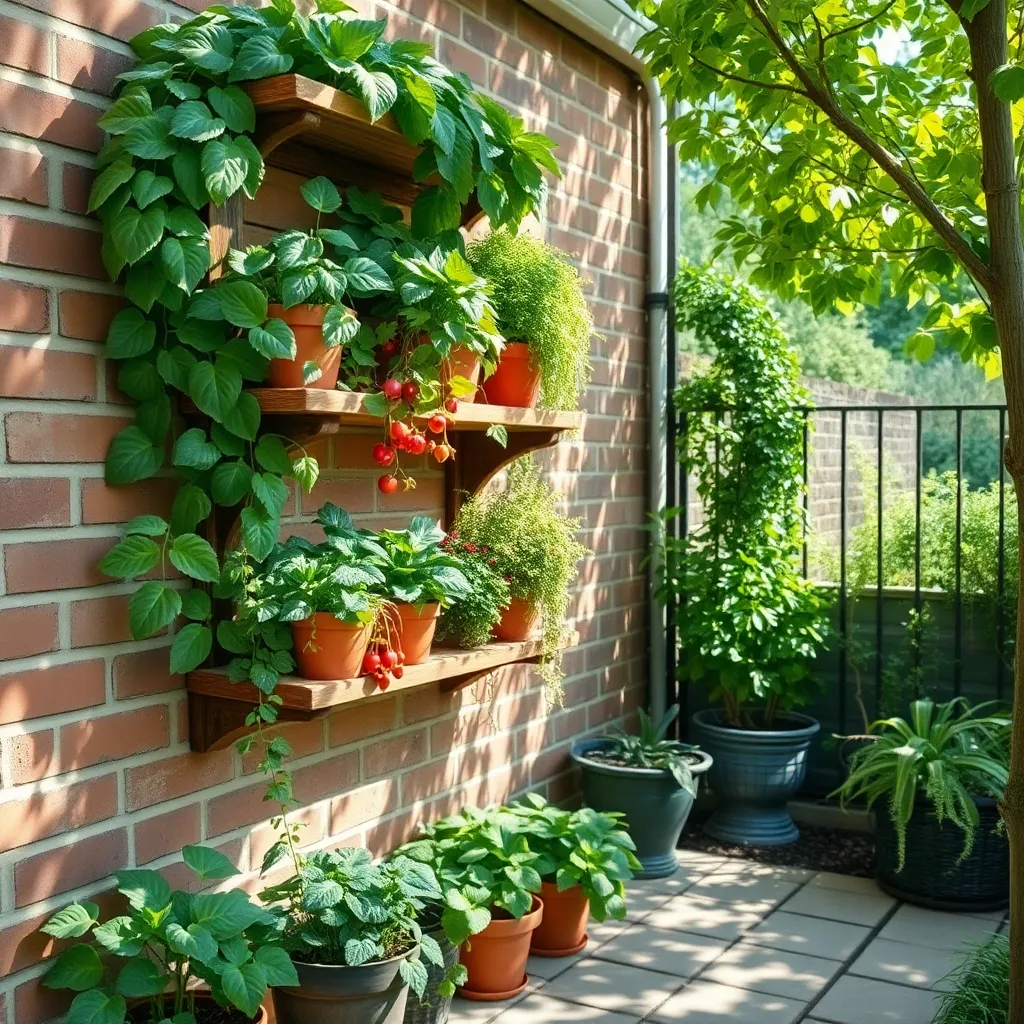
Corner shelves are an excellent way to maximize vertical space on your patio. By utilizing corners, you can create an organized and visually appealing plant display without taking up valuable floor space.
Consider using corner shelves to host a variety of plants that thrive in similar conditions. Succulents, ferns, and small flowering plants can be arranged to make the most of both sunlight and shade throughout the day.
To ensure your plants thrive, choose shelves made of weather-resistant materials such as metal or treated wood. Proper drainage is crucial, so select pots with drainage holes and use a well-draining soil mix, especially for succulents and cacti.
Watering frequency should be adapted to the plant species and shelf exposure. For example, succulents will need less frequent watering, while ferns require more consistent moisture, especially during warm weather.
Use Pallet Gardens for Herbs
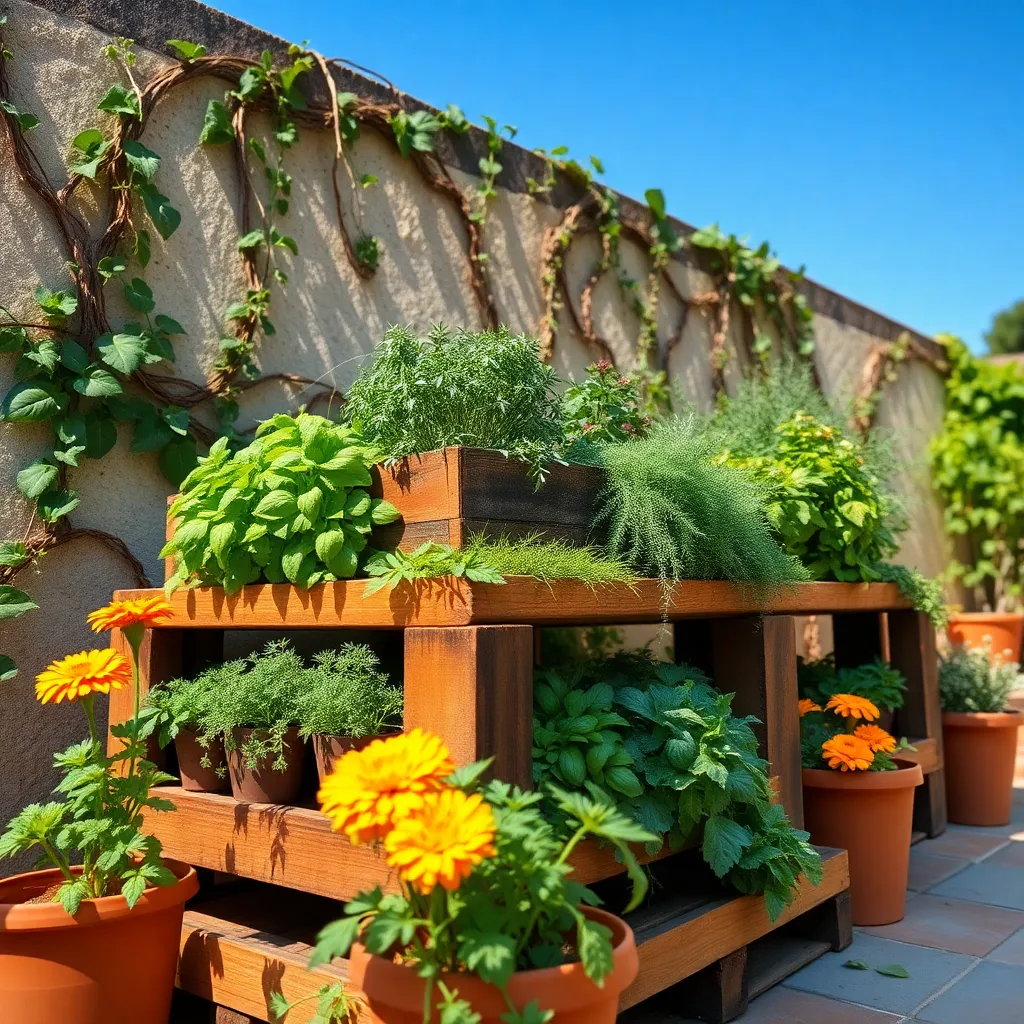
Pallet gardens are an inventive way to cultivate herbs on your patio, especially if you’re working with limited space. By using a vertical setup, you can maximize your gardening area without sacrificing any ground space, making it ideal for small patios or balconies.
Start by choosing a sturdy, untreated wooden pallet to ensure it’s safe for growing edible plants. Line the back of the pallet with landscape fabric to hold the soil in place, and fill the pallet with a high-quality potting mix rich in organic matter to support healthy herb growth.
When selecting herbs, consider varieties that thrive in similar conditions, such as basil, thyme, and oregano, which prefer sunny spots and well-drained soil. Plant these herbs in pockets created by the pallet slats, ensuring each plant has enough room to grow without crowding its neighbors.
Water your pallet garden consistently, allowing the top inch of soil to dry out between waterings to prevent over-watering, which can lead to root rot. For more advanced gardeners, consider adding a drip irrigation system to maintain consistent moisture levels and reduce daily maintenance.
Fertilize your herbs every four to six weeks with a balanced, water-soluble fertilizer to encourage robust growth and a continuous harvest. As your herbs mature, regularly pinch back the tips to promote bushier plants and prevent them from flowering too soon, ensuring you have a steady supply of fresh herbs for your culinary adventures.
Install Rail Planters for Privacy
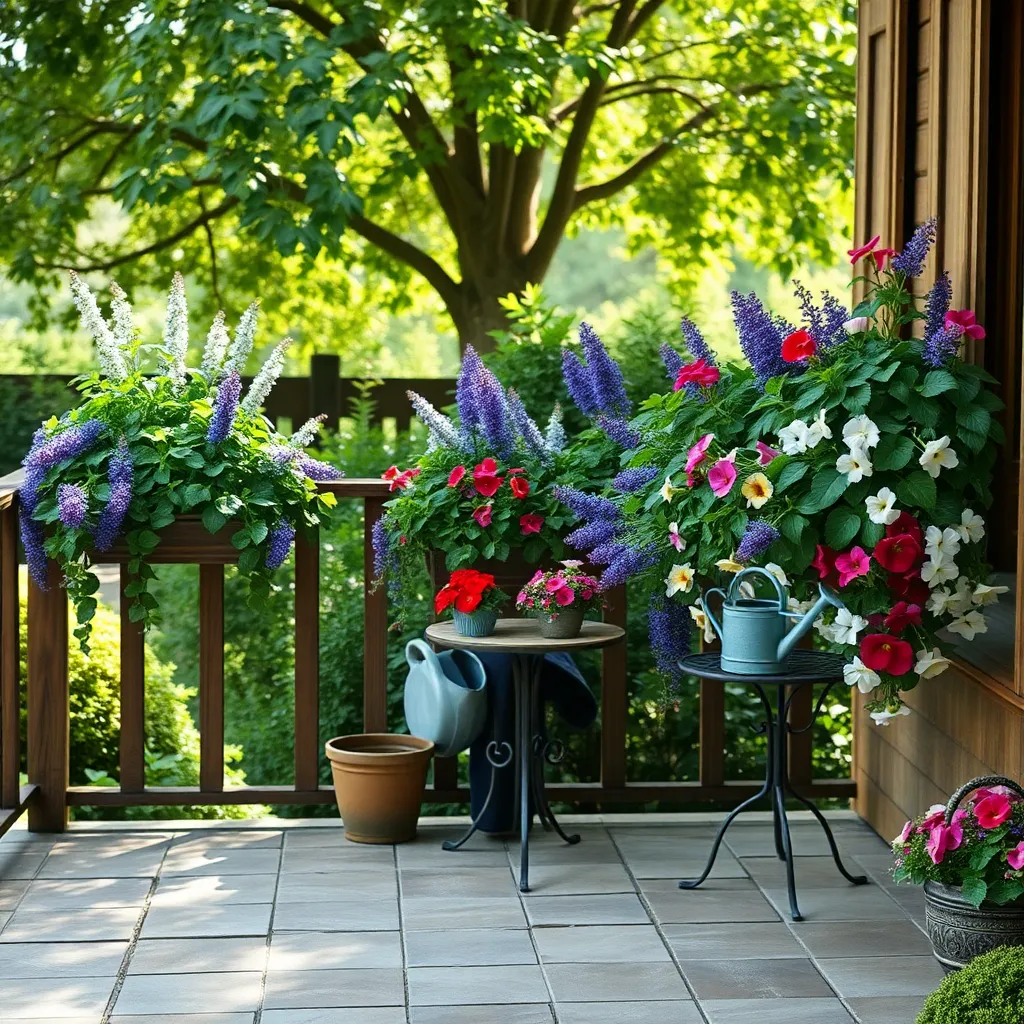
Rail planters are an excellent solution for adding privacy to your patio while also enhancing its aesthetic appeal. They can be easily mounted on railings, making them ideal for small spaces and urban gardens. To begin, choose planters that are appropriately sized for your railing, ensuring they fit securely and can hold the weight of soil and plants. Many rail planters come with adjustable brackets, allowing for flexibility in placement and ease of installation.
Selecting the right plants is crucial for maximizing privacy and beauty. Opt for dense, bushy plants such as boxwood, ivy, or ornamental grasses that grow quickly and provide ample coverage. These plants thrive in most climates, but it’s important to consider your local weather conditions and choose varieties that are suitable for your region. Additionally, ensure they receive adequate sunlight by placing your rail planters in a location that gets at least 6 hours of direct sun each day.
Proper care and maintenance will keep your rail planters looking vibrant and healthy. Use a high-quality potting mix that retains moisture yet drains well, as this will support root health and prevent waterlogging. Regular watering is essential, especially in hot weather, so check the soil frequently and water when the top inch feels dry. Fertilize your plants every 4-6 weeks with a balanced, slow-release fertilizer to promote lush growth and maintain their health throughout the growing season.
For those with more experience, consider incorporating a drip irrigation system to ensure consistent watering without the hassle. This advanced technique can save time and help maintain optimal moisture levels, providing a steady supply of water directly to the roots. By taking these steps, you’ll not only create a lovely, private oasis but also enjoy the satisfaction of a thriving patio garden that enhances your outdoor experience.
Mix Edibles with Ornamentals

Combining edibles with ornamentals in your patio garden offers both visual appeal and delicious harvests. Start by selecting a mix of plants that have similar light and water requirements to ensure they thrive together.
Consider planting vibrant Swiss chard alongside colorful pansies or marigolds. These combinations not only provide a beautiful display but also help deter pests naturally, reducing the need for chemical interventions.
For a fragrant and functional touch, integrate herbs like basil, thyme, or rosemary with flowering plants such as calendula or nasturtium. These herbs will add aroma and flavor to your meals while the flowers attract beneficial pollinators.
To maximize space, use vertical gardening techniques by training climbing beans or peas up trellises adorned with sweet peas or morning glories. This approach not only saves space but also creates a lush, layered look that is both productive and visually stunning.
Conclusion: Growing Success with These Plants
In exploring the ’12 Creative Patio Garden Ideas,’ we’ve uncovered a delightful array of relationship-building concepts that cultivate connection and joy. From the intimacy of a cozy seating nook to the collaborative spirit of a shared DIY project, each idea serves as a metaphor for nurturing love and understanding. We’ve touched on the importance of creating inviting spaces (concepts 1-3), fostering shared experiences (concepts 4-6), embracing creativity together (concepts 7-9), and maintaining a balance of individual and collective growth (concepts 10-12).
As your next step, why not choose one patio idea to implement this weekend? Whether it’s starting a miniature herb garden or setting up a stargazing corner, let this be a catalyst for deeper connection with your loved ones.
Remember, successful relationships are built on shared dreams and efforts. Save or bookmark this article to revisit these ideas whenever you need a spark of inspiration. Let these creative ventures be stepping stones to a flourishing relationship, reminding you that with every seed planted and every moment shared, you’re nurturing a lifelong bond. Your garden of love awaits—tend to it with care and watch it blossom.

